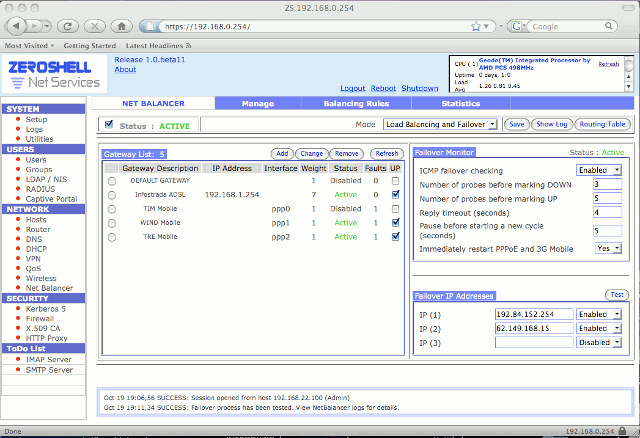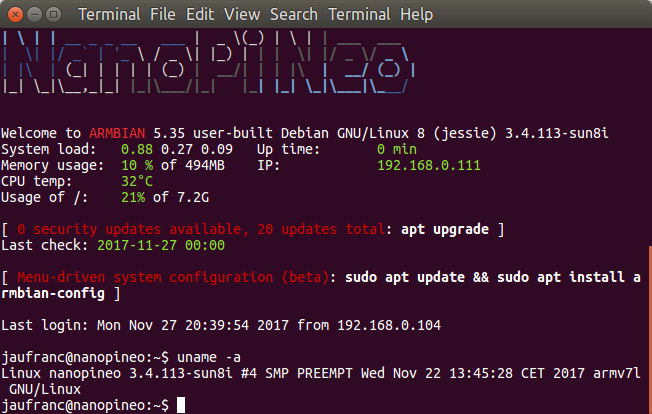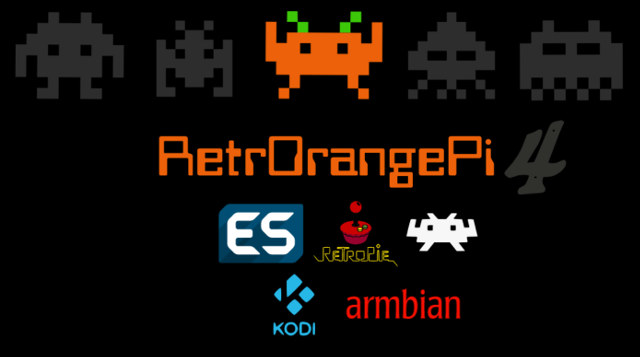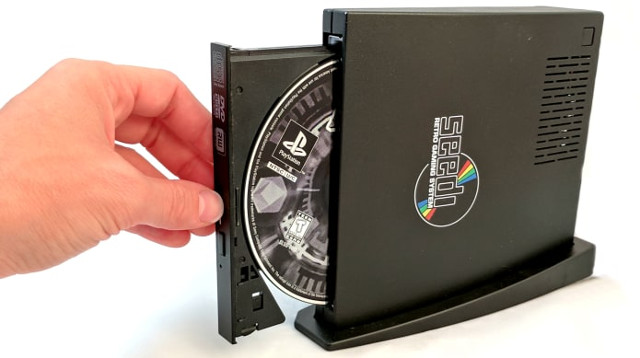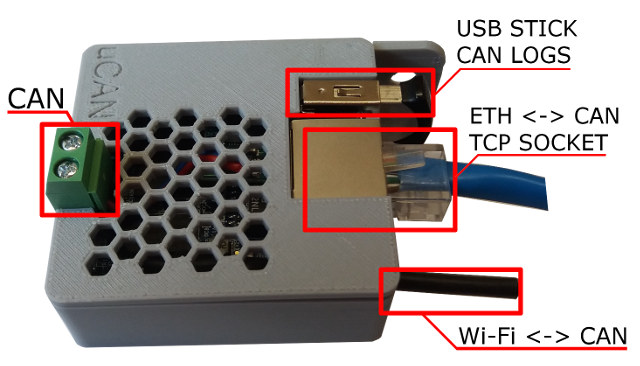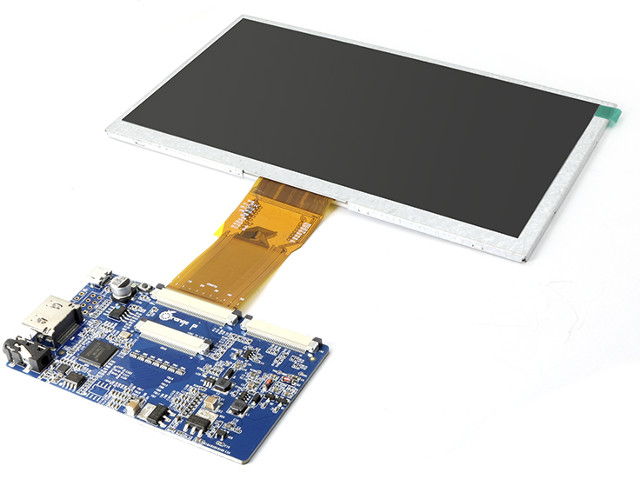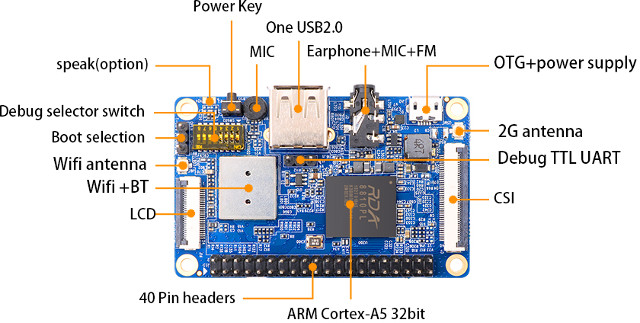We’ve just seen pfSense is now available for Arm via firewall appliances such as Netgate SG-3100, but AFAIK there’s no pfSense community Arm firmware images yet. Several Arm SoCs & boards are now supported by FreeBSD, so in theory pfSense could be ported to those, but the page on FreeBSD does not seem to have been updated for a while. If you want a firewall distributions with an easy-to-user web interface like pfSense, but that also works on cheaper Arm hardware, Linux based ZeroShell distribution could be worth a try, as beside working on Intel & AMD x86 platforms, the developers also provides images for Raspberry Pi 2 & 3 boards, and several Orange Pi boards, namely Orange Pi R1, Orange Pi Zero, Orange Pi PC, and Orange Pi Plus/Plus2. The latter is the only supported Arm board with Gigabit Ethernet. Some of ZeroShell features include: Load Balancing and Failover of […]
Armbian v5.35 Released with Linux 4.13, U-boot v2017.09, New Boards Support
Armbian v5.35 has been released last Friday as a major update that brings Linux mainline kernel to version 4.13, U-Boot mainline to version v2017.09, adds support for 7″ Raspberry Pi display, Realtek WiFi drivers (mainline), and new stable hardware support for NanoPi Duo, Pinebook, and Orange Pi R1. Some other boards got experimental support, including Le Potato, NanoPi NEO 2, Orange Pi Zero Plus, Orange Pi Zero Plus 2 (H5). The desktop version of the images gets a full featured XFCE terminal, OpenVPN connector, a new wallpaper, and various other changes and fixes. armbian-config is normally used to configure the board for example networking configuration, but the utility has become even more useful with support for Hotspot, Bluetooth, SSH server configuration, swtich between stable & beta builds and between kernel applications, adds the ability to start an RDP server, and install third party software such as SAMBA, OpenMediaVault, PiHole, Transmission […]
RetrOrangePi 4.0 Released
RetrOrangePi is a retro gaming & media center firmware based on Armbian Debian image and working on Allwinner H3/H2+ based Orange Pi boards, Banana Pi M2+, and NanoPi M1, as well as Beelink X2 TV Box. Right at the end of last year, I reviewed RetrOrangePi 3.0 on Orange Pi One board to which I connected Mars G01 gamepad, and I could play some games like Wolfenstein 3D and Quake, and watch videos on OpenELEC/Kodi 16. The firmware also comes with various emulators, but you’d have to load the ROMs yourself due to intellectual property / license issues. The developers have now released RetrOrangePi 4.0. RetrOrangePi 4.0 changelog: Latest Armbian v5.32 (Debian Jessie kernel 3.4.113) RetroPie-Setup v4.3.3 (unofficial fork, upgradeable) New RetrOrangePi repository for easy updates and fixes EmulationStation v2.6.5 with video and game collection support, Desktop/OpenELEC shorcuts from main menu New ROPi “Attract-Mode”-like theme (based on Cosmos theme) Retroarch […]
OpenBSD 6.2 Adds Support for Orange Pi PC 2, Firefly-RK3399
OpenBSD has been supporting 32-bit (ARMv7) and 64-bit (ARM64) ARM targets, but the just released OpenBSD 6.2 adds support for two more ARM64 boards: Orange Pi PC 2 and Firefly-RK3399. Those two add to the ARM64 list comprised of Raspberry Pi 3, Pine A64/A64+, and AMD Opteron A1100 based development board and SoftIron OverDrive 1000 servers. Other platforms based on Allwinner A64 & H5, and Rockchip RK3399 could likely also be supported. If you want to try it on your board, visit OpenBSD 6.2 ARM64 page to download the files: INSTALL.arm64 – Installation notes SHA256 – Output of the cksum(1) program using the option -a sha256, usable for verification of the correctness of downloaded files. SHA256.sig – The above file, signed with the OpenBSD signing key for the 6.2 release, usable for verification of the integrity of the above file, and thus of the downloaded files. miniroot62.fs – A miniroot […]
Orange Pi Lite Based Seedi Retro Gaming Console Takes Your Old DVDs or CD-ROMs (Crowdfunding)
Shenzhen Xunlong’s Orange Pi family is a nice collection of low costs ARM Linux development boards that can be used in all sort of projects, just like Raspberry Pi boards, but cheaper at the cost of requiring more skills, and/or efforts to complete a project. One popular use for Orange Pi boards is retro gaming thanks to community supported images like RetrOrange Pi supporting games for Atari, Amiga, DreamCast, and other consoles. The implementation looks good enough for startups to sell their own products based on Orange Pi hardware and RetrOrangePi software, as we’ve already seen with RetroEngine Sigma Retro Game Console which had a very successful Indiegogo campaign with $629,368 USD raised. “Seedi Team” has now launched their own game console apparently based on Orange Pi Lite, but it’s a little different as instead of copying “ROMs” , you can simply insert your old CD-ROMs or DVDs. Seedi game […]
uCAN CAN Ethernet Converter and Logger is Based on Orange Pi Zero Board
The CAN bus is a serial communication protocol used in automotive and automation applications. The guys at ucandevices.pl have designed a solution around Orange Pi Zero board that allows you to log CAN bus data or act as a bridge between the CAN bus and Ethernet or WiFi. They call it “CAN Ethernet converter, CAN Logger, Linux CAN computer”. Sorry, no shorter name that I could find… uCAN (pronounced micro CAN) CAN Bus board specifications: Main Board – Orange Pi Zero with Allwinner H2+ quad core cortex-A7 processor, 256 MB RAM Network Connectivity – 10/100M Ethernet, 802.11 b/g/n WiFi Can Bus – 2-pin terminal block; support for CAN version 2.0 support Power Supply – DC 5V/2A via micro USB port Dimension – 50 x 50 x 20 mm The device comes pre-load with Debian distribution provided by Armbian plus various CAN tools. The getting started video below shows uCANTools web […]
7″ LCD Display with HDMI input, Audio output Launched for Orange Pi (and Other) Boards
If you want a cheap and simple way to add a screen to your development board, there are some 7″ displays with HDMI inputs that costs under $30 shipped. But Shenzhen Xunlong has decided to make their own 7″ LCD display with HDMI input and audio output, and sell for $22 + shipping. The company only provided minimal technical information about the board and display: Display – 7″ TFT LCD with 1024×600 resolution Video & Audio Input – HDMI Audio Output – 3.5mm audio jack Power Supply – 5V via micro USB port If we look at a closer picture of the board, we’ll see they used Lontium LT8619B, but the company’s website is down… The board also features three different connectors for displays, so they probably have other displays planned. While the company claims the display is made for Orange Pi H3 boards, it should really work with any […]
Orange Pi 2G IoT Board Can Now Boot Linux from NAND Flash
Orange Pi 2G IoT is a $10 development board with a 2G cellular modem that was launched last March. The board is based on RDA Micro RDA8810PL processor designed for cheap Android phones, but Linux support was also promoted, and an RDA8810 Android SDK was released in April. It was the first time RDA8810 was used in a development board, and unsurprisingly it was, and still is, a challenge to use such board, as software support is on-going… So people who purchased the board has troubles with controlling GPIOs, or booting Linux from the SoC’s built-in NAND flash, instead reverting to booting from a micro SD card. Luckily, Orange Pi forum’s user surfero75 worked on the latter, found a solution, and posted instructions in Spanish. He wrote those instructions leveraging the work done by Aib user, and I summarized the main steps below explaining how install and boot from NAND […]


